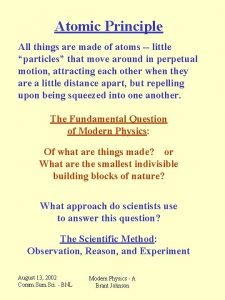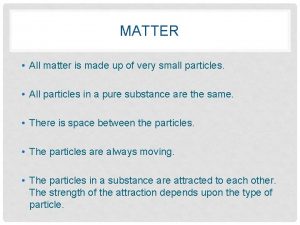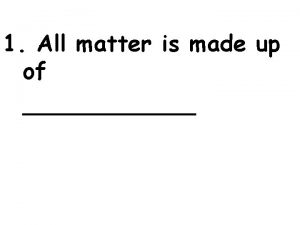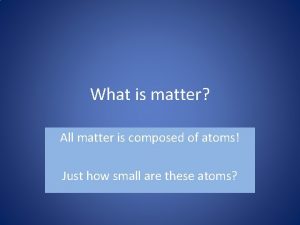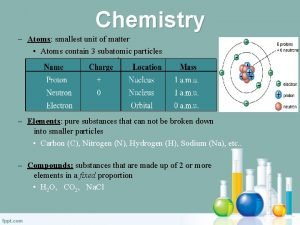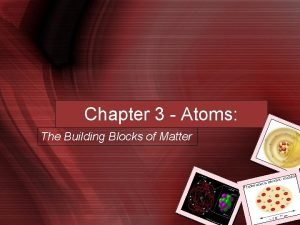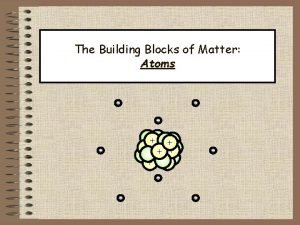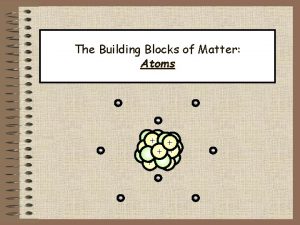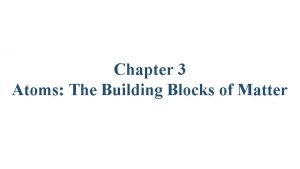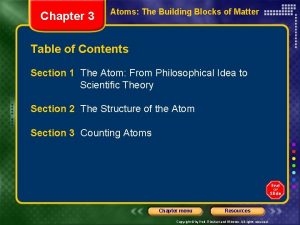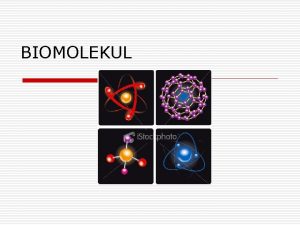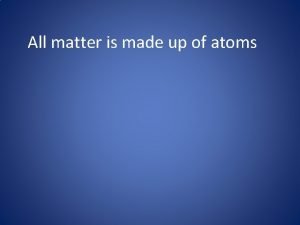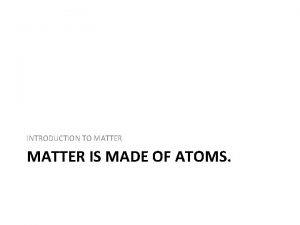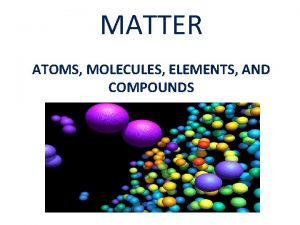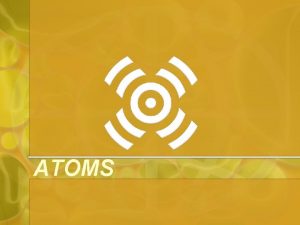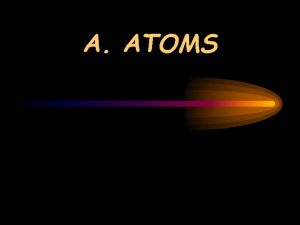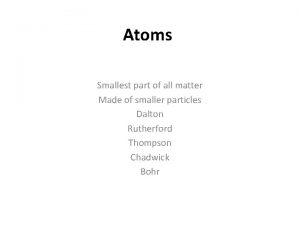l All matter is made of atoms Atoms
















- Slides: 16


l All matter is made of atoms. Atoms contain positively charged protons, negatively charged electrons, and neutral neutrons. l Opposite charges exert a force of attraction on each other. Similar charges exert a force of repulsion.

• Certain materials permit electric charges to flow freely. Such materials are called conductors. • Most metals are good conductors of electricity. Silver, copper, aluminum, and mercury are among the best conductors. The Earth is also a good conductor.

• Materials that do not allow electric charges to flow freely are called insulators. Insulators do not conduct electric charges well because the electrons in the atoms of insulators are tightly bound and cannot move throughout the material. • Good insulators include rubber, glass, wood, and plastic.

Static Electricity • Static electricity is the build up of electric charges on an object. • The electric charges build up because electrons have moved from one object to another. Once built up, the charges do not flow. They remain at rest.

Electric Discharge • The loss of static electricity as electric charges move off an object is called electric discharge. • One example of electric discharge is lightning.

• A continuing flow of electric charges is produced by a device that changes other forms of energy into electrical energy. • A device that converts other forms of energy into electrical energy is known as a source of electricity. Batteries, electric generators, thermocouples, and photocells are all sources of electricity.

• A battery is a device that produces electricity by converting chemical energy into electrical energy. • A battery is made of several smaller units called electric cells. • Electric cells can be either dry cells (flashlight battery) or wet cells (car battery).

• A generator is a device that converts mechanical energy into electrical energy. • A Thermocouple is a device that produces electrical energy from heat energy. • A Photocell takes advantage of the fact that when light with a certain amount of energy shines on a metal surface, electrons are emitted from the surface.

• When a wire is connected to the terminals of a source, a complete path called a circuit is formed. • A flow of charge is called an electric current.

Current Direction • When electrons always flow in the same direction the current is called direct current, or DC (electricity from dry cells and other batteries is direct current). • When electrons move back and forth, reversing their direction regularly, the current is called alternating current, or AC (the electricity in your home is alternating current).

• In order to flow, electrons need a closed path through which to travel. An electric circuit provides a complete, closed path for an electric current. • The switch in an electric circuit opens and closes the circuit. When the switch of an electric device is off, the circuit is open and electrons cannot flow. When the switch is on, the circuit is closed and electrons are able to flow.

There are two types of electric circuits; series and parallel circuits. • If all the parts of an electric circuit are connected one after another, the circuit is a series circuit.

• In a parallel circuit, the different parts of an electric circuit are on separate branches. There is more than one path for the electrons to travel. • If there is a break in one branch of a parallel circuit, electrons can still move through the other branches.

Circuit Safety Features • To protect against too much current flowing at once, your home may have fuses in a fuse box. • If the current becomes too high, the metal strip inside the fuse melts and breaks the flow of electricity.

Circuit Safety Features • Circuit breakers protect a circuit from becoming overloaded. Modern circuit breakers have a switch that flips open when the current flow becomes too high. • Circuit breakers are easier to use than fuses.
 Are all things made of atoms
Are all things made of atoms All matter
All matter Element mixture and compound diagram
Element mixture and compound diagram All matter is made up of
All matter is made up of Periodic table regents
Periodic table regents Name all the lines name all the segments name all the rays
Name all the lines name all the segments name all the rays Are atoms the smallest unit of matter
Are atoms the smallest unit of matter Atoms the building blocks of matter
Atoms the building blocks of matter Atoms the building blocks of matter
Atoms the building blocks of matter Building blocks of atoms
Building blocks of atoms Chapter 3 atoms the building blocks of matter
Chapter 3 atoms the building blocks of matter Which subatomic particle has the least mass
Which subatomic particle has the least mass Bagian terkecil dari makhluk hidup penyusun tubuh
Bagian terkecil dari makhluk hidup penyusun tubuh Are cells made up of atoms
Are cells made up of atoms Classification of matter section 1 composition of matter
Classification of matter section 1 composition of matter Gray matter
Gray matter Composition of matter section 1
Composition of matter section 1
